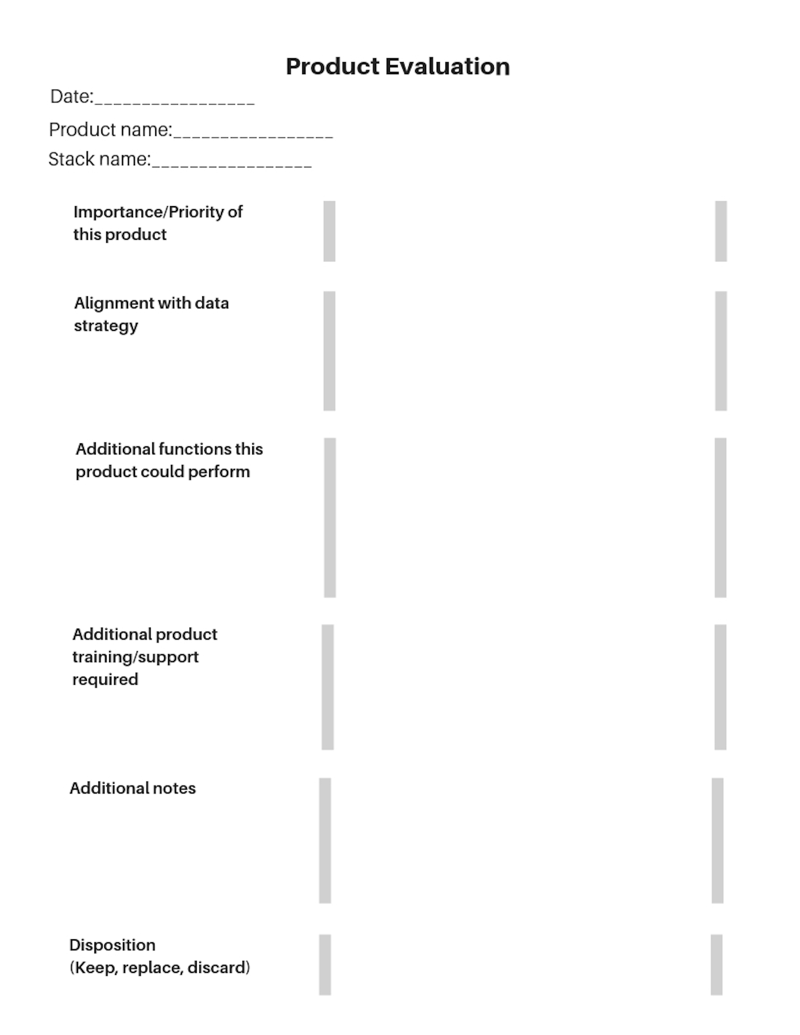With a clear data strategy and plan, and clarity around your anchor platforms, you should now move on to looking at the rest of your technology stack.
In an M&A environment there is a strong possibility that you will have redundant products in every layer. The best approach to rationalizing these is to prioritize which layers you’ll tackle first, and then work them layer by layer.
To start, eliminate any remaining Zombie products. If you are trapped due to an auto-renewal clause with no immediate cancellation possible, make sure that you highlight the next auto-renewal date to ensure that you don’t miss your next chance to cancel the subscription. Note: In our experience, we’ve found that many companies will allow you to cancel your subscription despite auto-renewal and non-cancellation clauses, so it’s worth reaching out to ask.
This is the time to revisit the requirements framework that you and your stakeholders created for your marketing technology stack and the product attributes that you collected for each product.
For each product in your stack—both acquired and internally developed— review the following information that you’ve collected:
In addition, you should now also consider:
With all this information in hand, you are now in a position to determine for each product whether to keep it in the stack, retire it, or consider it for replacement.
As part of this exercise, identify redundant products. Email seems to be a common category for redundant products, and while there might be a reason to have more than one email platform, you need to consider whether you really need three, four, or even five different platforms. Compare these products alongside each other, and against your functional requirements, to see if there is an opportunity to reduce the number of redundant platforms. Make sure that as you work through this exercise, you take into account both existing functional requirements as well as anticipated future requirements, to ensure that if you do reduce the number of redundant platforms, you are as farsighted as possible in your decision-making.
The last and hardest part of this exercise is to identify and rationalize platform redundancies that exist between product categories. It’s not unusual to have different types of platforms performing the same functions, or a platform that is being used for one function that is capable of being used for an additional set of functions. We see functional overlap most often in Email, Marketing Automation, CRM, and Account Based Marketing (ABM). As you rationalize your stack it’s important to look at how tools are being used and what they are capable of; you may be able to save significant money by eliminating functional redundancies.
For products that you intend to keep, identify contract duplications within each company and between companies. It’s not unusual to see multiple departments using the same products with each department establishing their own contract with the vendor. There’s money to be saved in consolidating contracts! For some reason, marketing automation seems to be a category in which this issue frequently exists. We’ve seen companies unearth more than five active contracts for the exact same marketing automation platform.
Note: As you work through the rationalization exercise and spend time talking with the users of various products, you are likely to identify additional functional requirements to add to your overall list of technology requirements. It’s important to keep building, refining, and revising the list as you work through this process.
